About the Boeing 707:The Boeing 707 is an early American long-range narrow-body airliner, the first jetliner developed and produced by Boeing Commercial Airplanes. Developed from the Boeing 367-80 prototype, the initial 707-120 first flew on December 20, 1957. Pan Am began regular 707 service on October 26, 1958. With versions produced until 1979, the 707 is a swept wing quadjet with podded engines. Its larger fuselage cross-section allowed six-abreast economy seating, retained in the later 720, 727, 737, and 757 models.
Although it was not the first commercial jetliner in service, the 707 was the first to be widespread, and is often credited with beginning the Jet Age.[1] It dominated passenger air-transport in the 1960s, and remained common through the 1970s, on domestic, transcontinental, and transatlantic flights, as well as cargo and military applications. It established Boeing as a dominant airliner manufacturer with its 7x7 series. The initial, 145-foot-long (44 m) 707-120 was powered by Pratt & Whitney JT3C turbojet engines. The shortened, long-range 707-138 and the more powerful 707-220 entered service in 1959. The longer-range, heavier 707-300/400 series has larger wings and is stretched slightly by 8 feet (2.4 m). Powered by Pratt & Whitney JT4A turbojets, the 707-320 entered service in 1959, and the 707-420 with Rolls-Royce Conway turbofans in 1960.
The 720, a lighter short-range variant, was also introduced in 1960. Powered by Pratt & Whitney JT3D turbofans, the 707-120B debuted in 1961 and the 707-320B in 1962. The 707-120B typically flew 137 passengers in two classes over 3,600 nautical miles [nmi] (6,700 km; 4,100 mi), and could accommodate 174 in one class. With 141 passengers in two classes, the 707-320/420 could fly 3,750 nmi (6,940 km; 4,320 mi) and the 707-320B up to 5,000 nmi (9,300 km; 5,800 mi). The 707-320C convertible passenger-freighter model entered service in 1963, and passenger 707s have been converted to freighter configurations. Military derivatives include the E-3 Sentry airborne reconnaissance aircraft and the C-137 Stratoliner VIP transport. In total, 865 Boeing 707s were produced and delivered, not including 154 Boeing 720s.
About Korean Air:Korean Air Lines Co., Ltd. (KAL; Korean: ???? ????; RR: Jusikhoesa Daehan Hanggong) is the flag carrier of South Korea and its largest airline based on fleet size, international destinations, and international flights. It is owned by the Hanjin Group.
The present-day Korean Air traces its history to March 1, 1969, when the Hanjin group acquired government-owned Korean Air Lines, which had operated since June 1962.[1] Korean Air is a founding member of SkyTeam alliance and SkyTeam Cargo. As of 2024, it is one of the 10 airlines ranked 5-star airline by Skytrax,[2] and the top 20 airlines in the world in terms of passengers carried and is also one of the top-ranked international cargo airlines.
Korean Air's international passenger division and related subsidiary cargo division together serve 126 cities in 44 countries. Its domestic division serves 13 destinations. The airline's global headquarters is located in Seoul, South Korea. The airline had approximately 20,540 employees as of December 2014.[3]
The airline was, around 1999, known as "an industry pariah, notorious for fatal crashes" due to its poor safety record and a large number of incidents and accidents.[4] The airline's reputation has significantly improved by 2009 as it has focused investment on improving its safety record including by hiring consultants from Boeing and Delta Air Lines.[5]
In November 2020, it was announced that Korean Air would merge with competitor Asiana Airlines, but was switched to only acquire a major stake after the original merger plan was blocked by the United States Department of Justice for monopoly concerns. The acquisition was completed on December 12, 2024.[6][7]
Really Images:


Previous Livery:

Person who bombed the plane:

About Korean Air 858:Korean Air Flight 858 was a scheduled international passenger flight between Baghdad, Iraq, and Seoul, South Korea. On 29 November 1987, the aircraft flying that route exploded in mid-air upon the detonation of a bomb planted inside an overhead storage bin in the airplane's passenger cabin by two North Korean agents.
The agents, acting upon orders from the North Korean government, planted the device before disembarking from the aircraft during the first stop-over, in Abu Dhabi, United Arab Emirates. While the aircraft was flying over the Andaman Sea to its second stop-over, in Bangkok, Thailand, the bomb detonated and destroyed the Korean Air Boeing 707-3B5C. Everyone aboard the airliner was killed, a total of 104 passengers and 11 crew members (almost all were South Koreans). The attack occurred 34 years after the Korean Armistice Agreement that ended the hostilities of the Korean War on 27 July 1953.
The two bombers were traced to Bahrain, where they both took ampules of cyanide hidden in cigarettes when they realized they were about to be taken into custody. The man died, but the woman, Kim Hyon-hui, survived and later confessed to the bombing. She was sentenced to death after being put on trial for the attack, but was later pardoned by the President of South Korea, Roh Tae-woo because it was deemed that she had been brainwashed in North Korea. Kim's testimony implicated Kim Jong Il, who at that time was the future leader of North Korea, as the person ultimately responsible for the incident. The United States Department of State specifically refers to the bombing of KAL 858 as a "terrorist act" and, except between 2008 and 2017, has included North Korea on its State Sponsors of Terrorism list.
vte
Division of Korea
Post-armistice conflicts
Border incidents
DMZ conflicts
1966–1969 conflict Blue House raid Uljin–Samcheok Landings Major Henderson incident Axe murder incident
NLL conflicts
1st Yeonpyeong 2nd Yeonpyeong Daecheong Cheonan incident 3rd Yeonpyeong
Other maritime incidents
Dangpo incident June 1974 ROK Coast Guard ship incident Pueblo incident EC-121 shootdown Gangneung Sokcho Yeosu
Terror attacks
Rangoon bombing Gimpo International Airport bombing Korean Air Flight 858
1993-1994 tensions
1994 North Korean nuclear crisis Agreed Framework
2013 Korean crisis
South Korea cyberattack Panama ship seizure Post-crisis threats
2017–18 North Korea crisis
Hwasong missile tests
2018–19 Korean peace process
1st Inter-Korean Summit Panmunjom Declaration 2nd Inter-Korean Summit 2018 Singapore Summit 3rd Inter-Korean Summit 2019 Hanoi Summit 2019 DMZ Summit
2020s tensions
Inter-Korean Liaison Office bombing Inter-Korean Railway bombing [zh]
Since the attack, diplomatic relations between North Korea and South Korea have not significantly improved, although some progress has been made in the form of four Inter-Korean summits. Kim Hyon-hui later released a book, The Tears of My Soul, in which she recalled being trained in an espionage school run by the North Korean army, and being told by her superiors that Kim Jong Il personally gave the order for the attack. She was branded a traitor by North Korea and became a critic of North Korea after seeing South Korea. Kim now resides in exile, and under constant tight security, fearing that the North Korean government wants to kill her.[1] "Being a culprit, I do have a sense of agony with which I must fight", she said at a press conference in 1990. "In that sense I must still be a prisoner or a captive—of a sense of guilt."[2]
Specifications
General Characteristics
- Predecessor Boeing 707-300 Heavy (VIP)
- Created On Android
- Wingspan 211.4ft (64.4m)
- Length 218.7ft (66.6m)
- Height 62.8ft (19.1m)
- Empty Weight 49,840lbs (22,607kg)
- Loaded Weight 88,587lbs (40,182kg)
Performance
- Power/Weight Ratio 2.435
- Wing Loading 18.8lbs/ft2 (92.0kg/m2)
- Wing Area 4,703.3ft2 (437.0m2)
- Drag Points 23076
Parts
- Number of Parts 378
- Control Surfaces 11
- Performance Cost 1,564


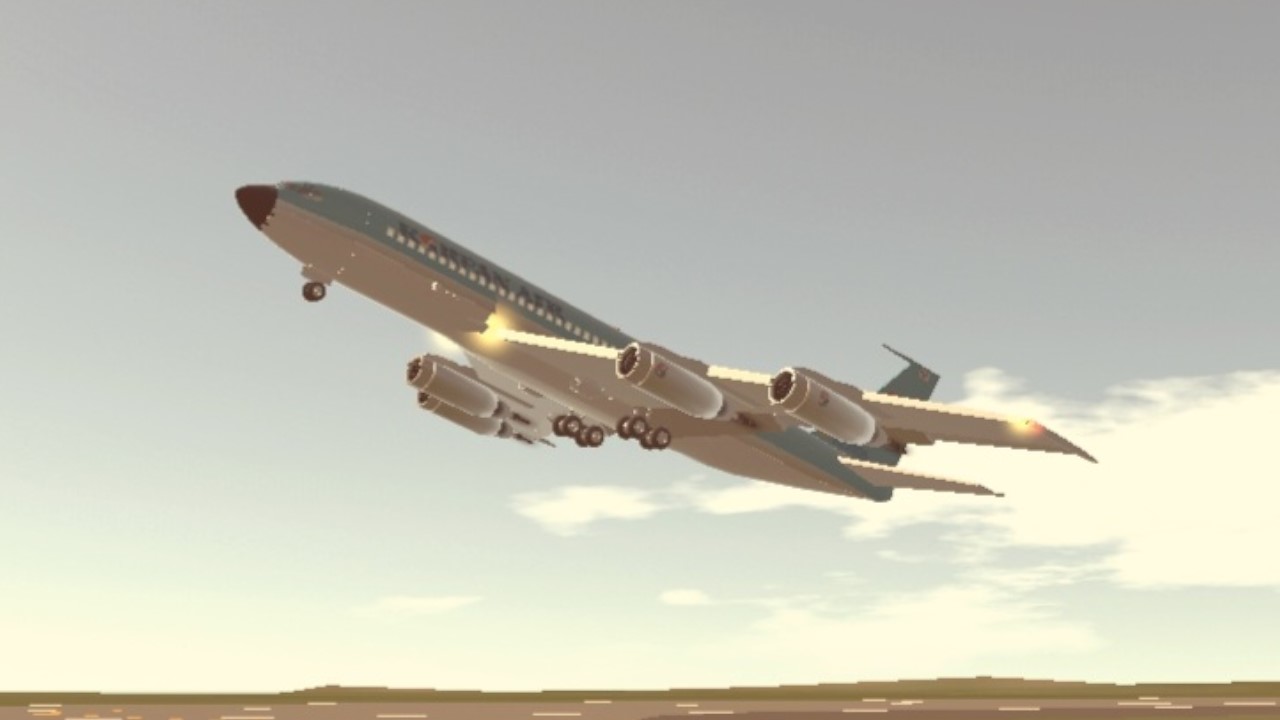
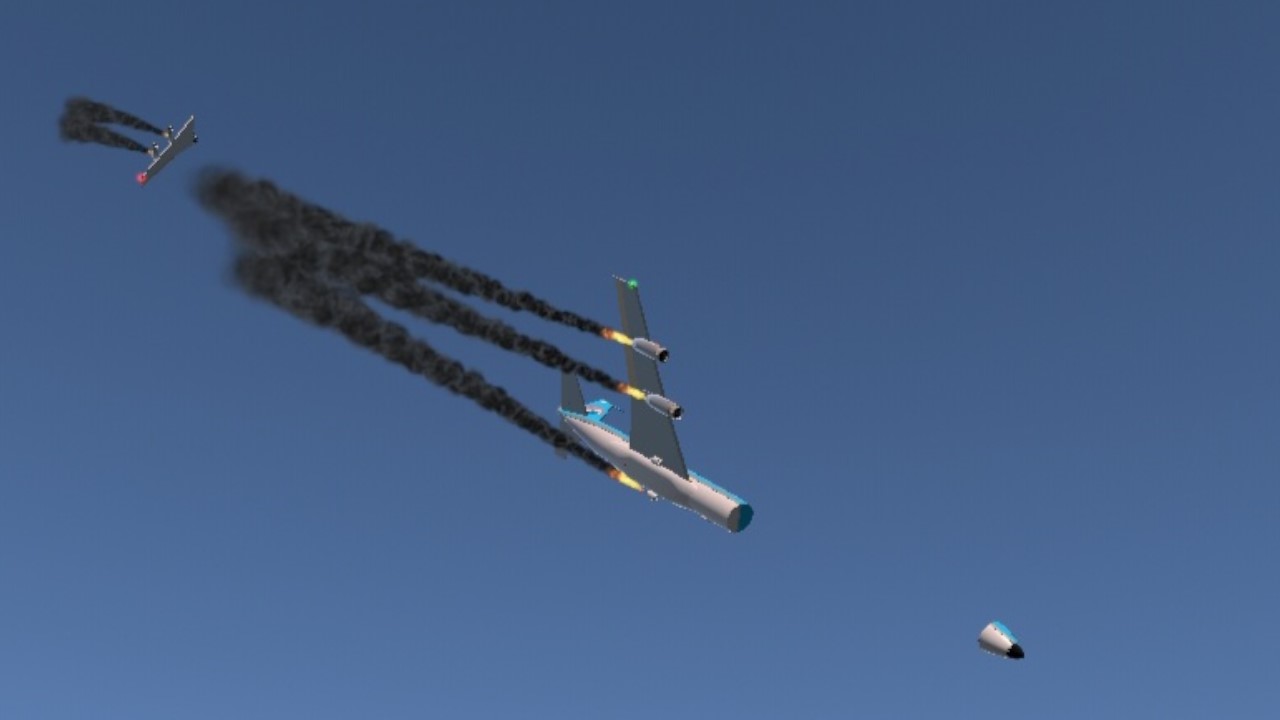
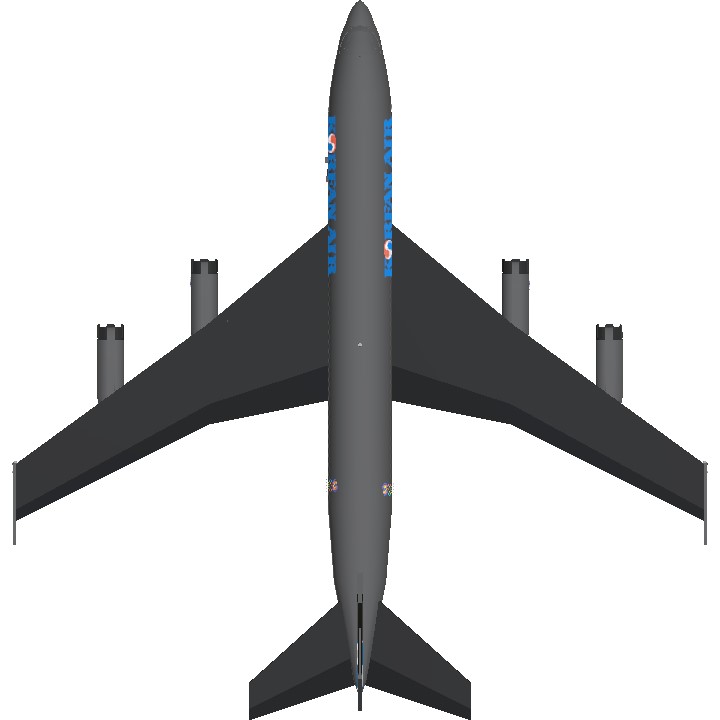
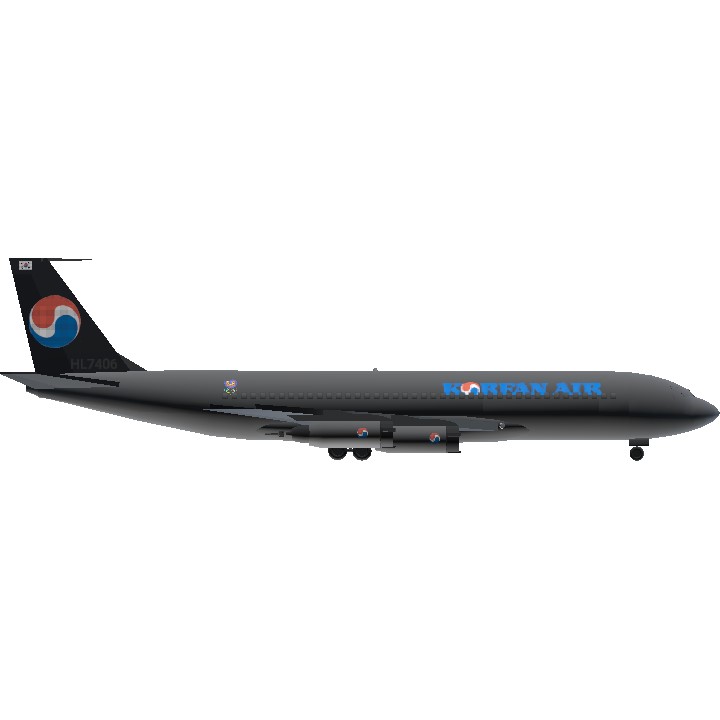
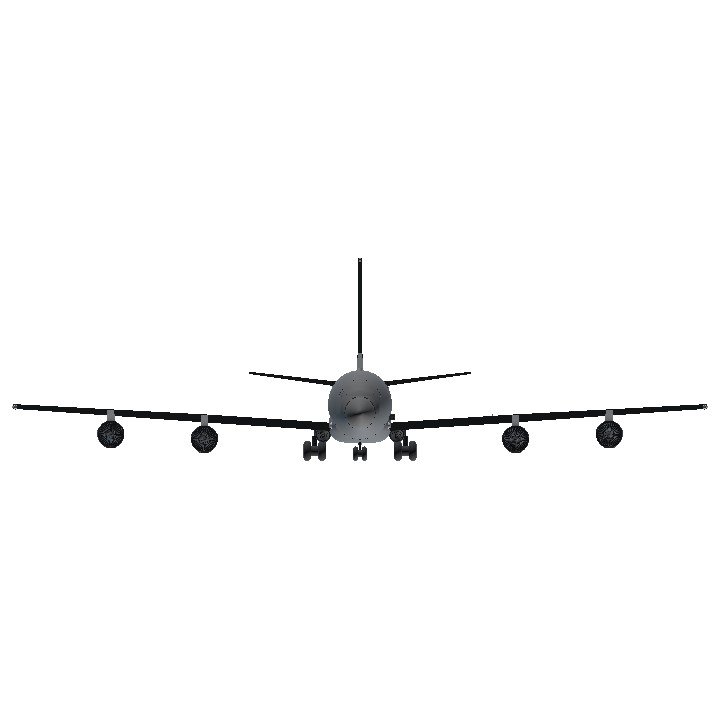
The bomber was a girl???